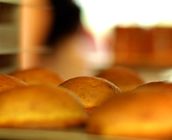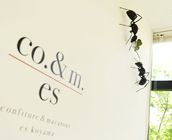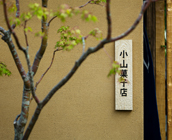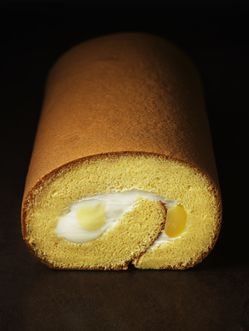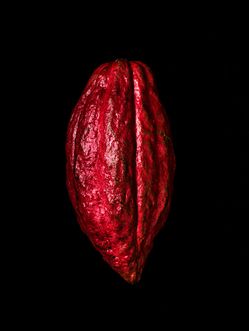
DNA Kyoto
Our mission is to convey the genuine article in a homage to tradition.
It is a pleasure to meet so many chocolate fans from all over the world at the Salon du Chocolat 2011. My name is Koyama Susumu, and everyday I create chocolate, macaroons, entremets, and a variety of other sweets as I welcome people to my shop, Patissier es Koyama, located in the beautiful, greenery-filled town of Sanda in Hyogo, Japan.
It is a great honor for me, as someone who has no never had the opportunity to study in Europe, to participate in this event in which the world's greatest chocolatiers gather. I would like to express my sincere gratitude to everyone who has made it possible for me to stand on this stage today.
The theme that I have chosen to explore at this year's Salon du Chocolat is "DNA Kyoto 2011." With this in mind, I hope to provide you with thoroughly unique sweets that are filled with Japanese food culture and could only have been conceived by a patissier such as myself who was born in Kyoto and raised in a genuinely Japanese culture.
There are many ingredients, including matcha, soy sauce, yuzu, Daitoku-ji natto, and bancha that are already known to and used by chefs in Paris, London, and New York. But there are other things, such as matcha brewed from freshly-ground, newly-picked leaves, Daitoku-ji natto made with carefully malted rice, and bancha toasted on an iron grill that are perhaps not so well known yet.
More than sweets "made by Koyama Susumu," I hope to convey the true charm of Japanese ingredients, the cultural background from which they come, and the Japanese artisanal spirit that they contain.
I hope that you will enjoy the experience of tasting this previously unknown encounter between the traditional ingredients of Japan, the cacao of the southern hemisphere, and the storied chocolate culture of Europe.
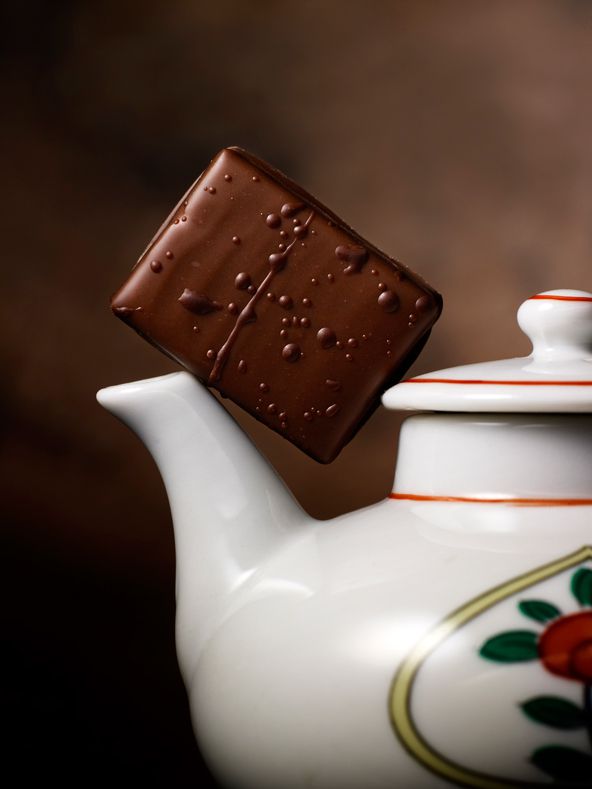
Black Soy-Bean Soy Sauce
Select cacao beans and soy sauce form a special resonance of milky and bitter tastes
Japanese people are crazy about combining unusual things. And I am no different. This finally led me to create a collaboration between soy sauce and chocolate. Yes, I'm talking about that black sauce you put on your sushi. But that's not to say that just any soy sauce would work. The one that I chose as the best for this collaboration was the top-grade black soy-bean soy sauce that has been produced for more than 300 years in the Banshu region of Hyogo Prefecture. Made completely with black soy beans from Tanba-Sasayama (famous as one of the few production areas for the bean in Kansai), the taste highlights a rich umami, and a mellow, deep flavor.
In this fantastic chocolate, a fusion of the cultures of the East and West, black soy-bean soy sauce, from my mother's hometown of Taka, in Hyogo Prefecture, meets milk chocolate (38%) made from Costa Rican Trinitario-type cacao beans and a bitter chocolate called Equatoriale Noir (55%) made by the Valrhona company.
In my early experiments, I thought I would just use the milk chocolate. But later, I added the bitter to draw out the full flavor of the cacao, and by blending the aroma of the chocolate with the soy sauce, I was able to highlight the special charm of the sauce. Having created a resonance between the sharp and powerful taste of the soy sauce and the cacao, I ended up with a truly powerful work.
Black Soy-Bean Soy Sauce
Japanese soy sauce is produced using a complex process in which the raw materials of soy beans, wheat, and salt are fermented with koji bacteria, lactic acid, and yeast. The deep aroma that emerges in the process, the umami created by the soy beans, and the sweetness derived from the wheat creates a highly distinctive taste. In Japanese cooking, soy sauce is widely used as a seasoning for boiled dishes and also as a base for soup and other sauces. Housed in a pourer, it is also a constant presence on the dining table, and is used in small amounts as a dip or topping for many foods.
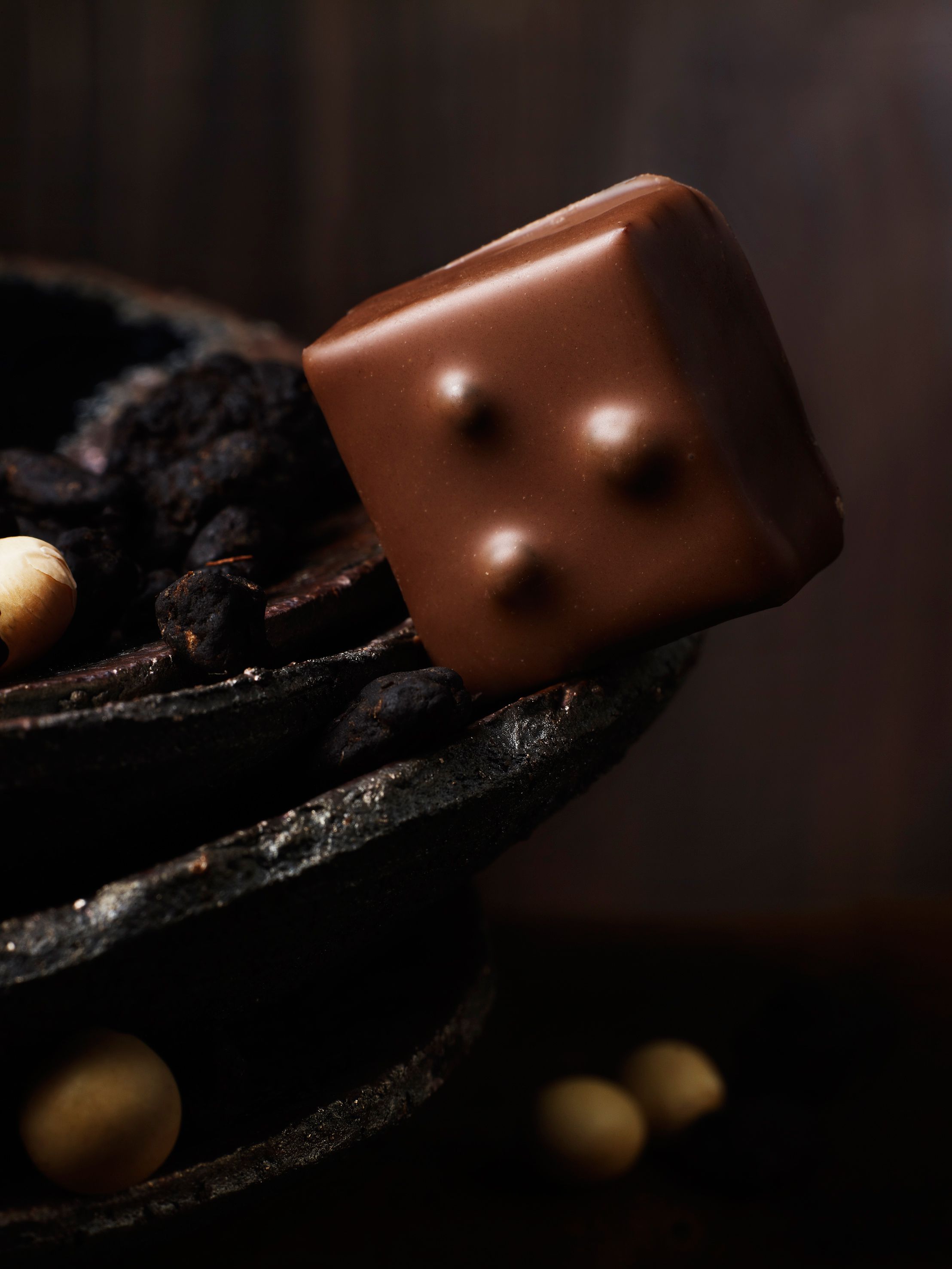
ikkyu
Japanese Caramel au Beurre Salé
filled with the hospitable spirit and quick-witted nature of Daitoku-ji natto
This chocolate expresses the deep impression I felt when I first encountered caramel au beurre salé many years ago in France based on a Japanese perspective and sensibility. The Costa Rican Trinitario-type cacao beans have a distinctive woody aroma that recalls the warmth of a forest and a rich, milky taste. By marrying the strong salty flavor of Daitoku-ji natto and the luscious chocolate, which is reminiscent of caramel, I created a Japanese-style caramel au beurre salé.
I intentionally refrained from including the daitoku-ji natto in the ganache for these chocolate bon bons, instead adding a covering after I had placed one of the beans on top of the ganache. This makes it possible to taste the salty flavor of the daitoku-ji natto directly on your tongue, and allows you to enjoy the fusion of the three elements of the covering, daitoku-ji natto, and ganache. While paying my respects to the original French delicacy, I concocted a completely new chocolate that is laced with the quick-witted spice of the japanese buddhist priest ikkyu osho.
daitoku-ji natto
daitoku-ji natto (fermented soy beans) was originally transmitted to japan by chinese Buddhist priests. Unlike regular natto, which is produced by fermenting the beans as a raw material, it was once used as a seasoning for its miso- and soy-sauce-like taste. To chefs of today, who have a different sensibility, it is prepared in a variety of different ways. According to one theory, it was originally made popular by the Buddhist priest Ikkyu Osho.
Ikkyu Osho
Ikkyu Osho (or Ikkyu Sojun) was a priest and poet who was associated with the Daitoku-ji Temple branch of Rinzai Zen Buddhism in the Muromachi Period (15th century). In Japan, he is often affectionately referred to as Ikkyu-san, and is a historical figure who is popular enough to have been turned into an animated character. Numerous anecdotes demonstrating his humorous and quick-witted ways of solving a variety of problems are still told today. He was also an invaluable adviser to many famous military leaders.

Matcha
We Only Brew the Genuine Article from Uji
Around my childhood home in Kyoto, there were a lot of tea fields. Matcha (green tea) is an extremely sensitive ingredient, which quickly oxidizes when exposed to sunlight, causing it to lose both its brilliant color and taste. To include a large quantity of matcha in my confectionery, I only buy a certain amount of the tea at a time, and preserve its color and taste by freezing or storing it. Unless you do this, by the time you finish, you'll end up with something completely different from genuine matcha.
Since I've been drinking tea since I was a child and I understand the sensitive nature of matcha, I am much more interested in including the freshly-ground taste in my ganache than most people. Moreover, since I can actually watch the process that begins with the harvesting of the tea leaves and continues with the production of matcha in the local area of Uji, which isn't far from my shop, I feel even more strongly about the importance of creating sweets with the freshest and highest-quality matcha.
The matcha used at Es Koyama is made of first-flush tea leaves harvested at one of the few tea-processing plants in Japan, Grand Cru, located in the Uji district of Kyoto. To ensure that the flavor is not lost, the top-quality matcha is finished by carefully grinding it on a stone. To express the flavor, color, and aroma of Uji matcha in a direct way, I chose pure white chocolate for the ganache. I hope you will thoroughly enjoy the bright green color that can only be found in genuine matcha, the concentration of amino acids, which provide the flavor, and the full-bodied taste.
Matcha
Matcha is a variety of green tea which is made by mortar-grinding dried tencha after steaming the leaves. In addition to tea ceremony, it is widely used as an ingredient in Japanese and Western-style sweets, and other dishes.
Until the Edo Period, it was made by adding hot water to ground tea leaves and stirring them. Even today, fresh matcha is used in tea ceremony, after grinding it the day before.
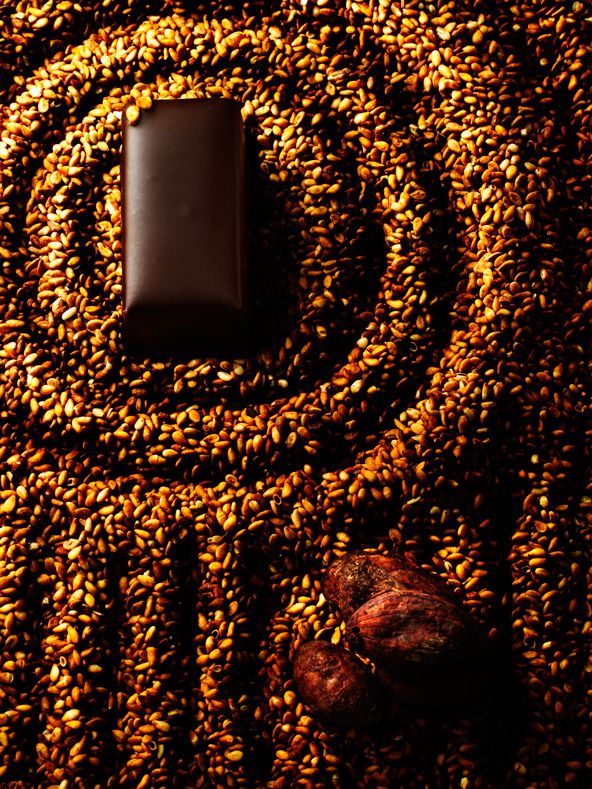
Golden Sesame Pralines
Small glittering grains of golden sesame
add a unique fragrance to these Japanese pralines
The word praline generally calls up an image of almonds and other nuts, but when I started to think I'd like to create a Japanese-style praline, the first thing that came to mind was golden sesame. Although sesame is a popular ingredient in Asia, in addition to white and black, there is also golden sesame, the highest-grade variety, which boasts a markedly different aroma and taste. After searching high and low for the ideal ingredient for my pralines, I finally came across some golden sesame in Tako, a town that neighbors Sanda, where our company is located.
Most of the golden sesame sold in Japan is imported from countries like Turkey. The great thing about the domestic variety, though, is that it is roasted immediately after being harvested in the production area. As a result, I was won over by the extremely strong, rich, and fresh aroma. This gave me the confidence to create pralines with just as distinct a character as those made with almonds or hazel nuts.
To bring out the roasted aroma of the golden sesame, I used some chocolate made from mellow and rich-flavored Madagascar Criollo-type cacao beans (38%). By this Chocolate, I was able to clearly convey the depth and body of the sesame. And then by adding carmelized golden sesame seeds, the roasted aroma grew even stronger, and gave the mixture a crisp texture. Sesame is produces such an aromatic, high-grade oil that it is often used for flavoring in Asia. Unlike an almond, a single sesame seed small in this way, but I hope you will have a chance to experience its great power this chocolate.
Golden Sesame
Sesame, which contains an abundance of protein, calcium, and other minerals, has been used in many countries since ancient times as a health food. Hippocrates, the father of Greek medicine, considered the seeds to be a highly nutritious food; in China, it was described as an edible pill and often included in herbal medical remedies; and in Japan, it was a common ingredient in the vegetarian meals eaten by Buddhist priests. As golden sesame was developed as a higher grade of the seed, it is distinguished by an extremely strong aroma and full-bodied taste not found in white and black sesame. And since it only accounts for about one percent of production volume, the golden variety is a rare pleasure and a top-quality item.
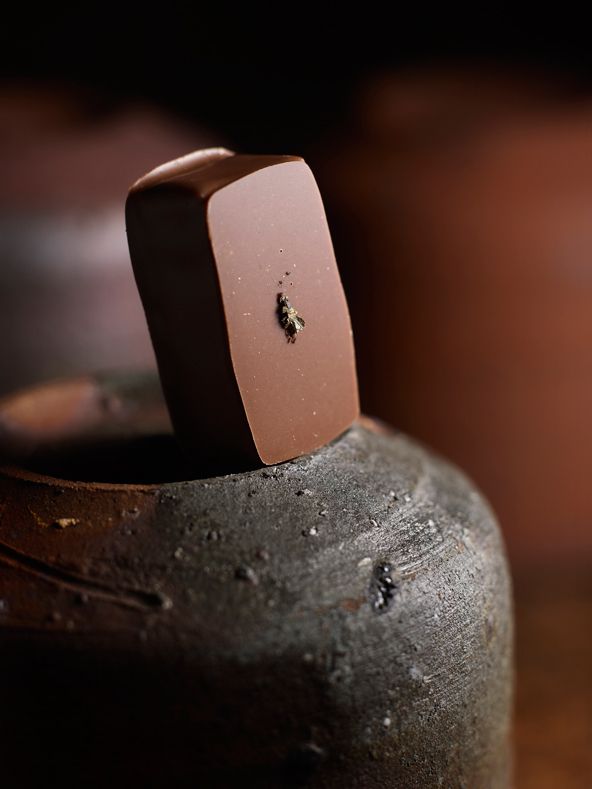
Kyo Bancha:
Like puffing on a cigar, sit back and relax
with the smoky sweet taste of this treat
It's nice to drink some Kyo bancha from a kettle when you go out somewhere and again when you get home. Because my mother made the tea in a large kettle everyday, it has been my favorite drink ever since I was child. Even when I stuffed my mouth with chocolate at snack time, it was my custom to drink Kyo bancha, so the two flavors frequently coexisted in my mouth. To tell the truth, I didn't drink the tea because I thought it was such a magnificent match for the chocolate; I was simply thirsty. Unfortunately, I wasn't one of those precocious kids who could distinguish between tastes. But after some time went by, I became a pâtissier, and when I was thinking about chocolate, I suddenly remembered that taste. Maybe Kyo bancha really would go well with chocolate, I thought. This flash of inspiration led me to make this chocolate bon bon. Fortunately, I have a good memory for tastes.
Like a cigarette tip or a cigar at a coffee bar, Kyo bancha has a smoky, sweet, and highly distinct flavor. After some thought, I chose to marry with this intense taste with a milk chocolate made from Madagascar Criollo-type cacao beans. The extremely unique aroma and tart taste of this chocolate worked to accentuate the taste of the tea even more. I hope you will enjoy experiencing the ultimate in Kyo bancha, and savor the smoky flavor until the very end.
Kyo Bancha
Hoji bancha produced primarily in the Uji region of southern Kyoto, the oldest tea processing area in Japan, is referred to as Kyo bancha. After the first tea leaves are picked, they are steamed, rubbed, and dried before finally being roasted. The tea differs from green tea in that the leaves retain their original form. Though Kyo bancha has a distinctive smoky aroma and taste, people in the Kyoto and Nara area have long had a custom of drinking it every day, and large one-kilogram packages line the shelves of local shops. In recent years, fans of the tea have decreased somewhat, but the name Kyo bancha is known throughout Japan, and it is still prized by enthusiasts.
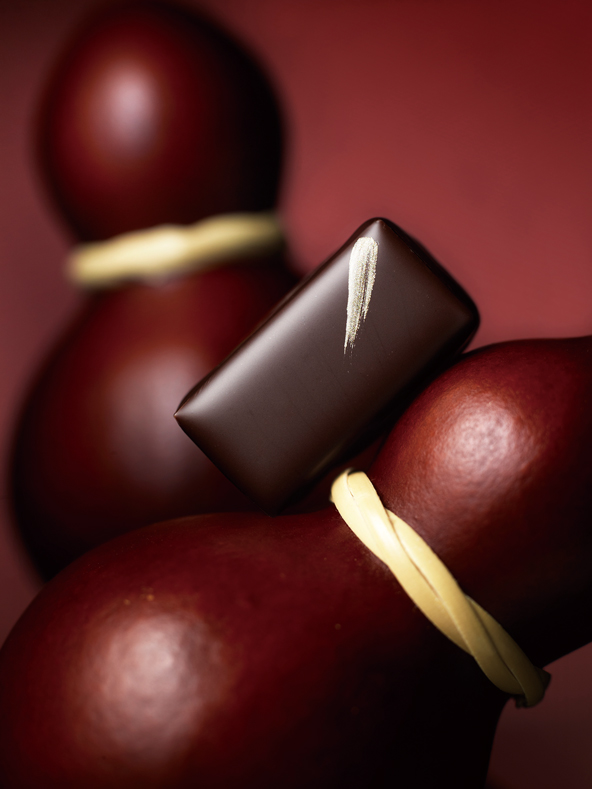
Kuro-Shichimi -Yabai-
On the heels of an enchanting sweetness comes a vivid spicy flavor and fragrance. Now you are a prisoner of Yabai.
On the dining table of childhood home in Kyoto, there was also some kuroshichimi. We sprinkled it on all kinds of foods, including udon noodles, tsukemono pickles, and oden to bring out the flavor. Of course, we also added kuroshichimi to my mother's speciality, kinpira gobo. Kinpira gobo is a salty-sweet, home-style dish made by sauteing vegetables like burdock and carrots, and seasoning them with soy sauce, sake, and sugar. The spectacular fragrance and spicy flavor of kuroshichimi brought out my appetite, and made it one of my favorite foods when I was a child.
When I first had the idea to make chocolate with the traditional Kyoto ingredient of kuroshichimi, I considered putting it directly into some bitter chocolate, but at some point I was reminded of the kinpira gobo I had eaten as a child. Then I realized that it was the sweetness of the sugar mixed with the burdock that really brought out the spiciness of the kuroshichimi.
That made me think that instead of merely combining the chocolate and the spices, I would use the taste of honey as a filter. In other words, I decided to make chocolate bonbons with honey and bitter chocolate topped of with spicy kuroshichimi. The result was Yabai.
When making the ganache, even though I kneaded honey into the mixture, I turned to extremely bitter Guanaja 70-percent chocolate to stop the taste from becoming too sweet. Then, I added kuroshichimi and to accentuate the spiciness in the sweet honey. The instant you put it in your mouth, you can enjoy several layers of taste beginning with the mellow fragrance of the bitter chocolate and the gentle sweetness of the honey followed soon after by the aroma of the spicy kuroshichimi. Incidentally, the Japanese word yabai means bad. This is the ultimate praise for a flavor that is so distinct that it borders on the dangerous and exudes an edgy sense of coolness.
Kuroshichimi
The mixture is made up of red pepper, Japanese pepper powder, white pepper, black pepper, poppy seeds, sesame seeds, and seaweed. After roasting these seven ingredients, the aroma of the mixture is brought out by rubbing the spices with one's hands. Unlike red shichimi, which is only a mixture of the raw ingredients, black shichimi, is massaged until it turns a deep shade of brown, causing the oil in the ingredients gently ooze out, and bringing out all of their glorious fragrances.

Kome Koji Miso
A new taste is born from an encounter between two different food cultures: chocolate and miso
Although you might be familiar with miso soup, the chances of your having tried miso chocolate are very slim. The kome koji miso used in the ganache for this chocolate was produced in the rich natural surroundings of my mother's hometown of Taka, in Hyogo Prefecture. The miso, which fills me with a special sense of nostalgia for my childhood, was made with organic soy beans straight from the fertile ground, Ako sea salt, and an abundance of kome koji (malted rice), which was organically harvested and then fermented. Even today, it is handmade using a traditional method.
The miso, which is finished in a huge wooden tub that has been used for over 100 years, is finally complete after a ten-month maturation period. The result is a truly scrumptious Japanese condiment in which the malted rice, soy beans, and sea salt create a harmony filled with a robust, mellow flavor, ample body, and subtle sweetness.
I chose to set off this singular creation with a milk chocolate (38%), made from Costa Rican Trinitario-type cacao beans, that is notable for its deep, caramel-like taste. The gentle sweetness of the chocolate mixed with the creamy miso produces a rich flavor similar to a smooth salt caramel, providing you with the true pleasure of chocolate.
Kome Koji Miso
Miso is a Japanese food that is made by fermenting and maturing grain. It is one of the country's standard condiments, and is known both in Japan and around the world as one of the culture's foremost tastes. After combining koji, created by breeding yeast in white rice, with soy beans, and fermenting and maturing the mixture, you end up with kome koji.
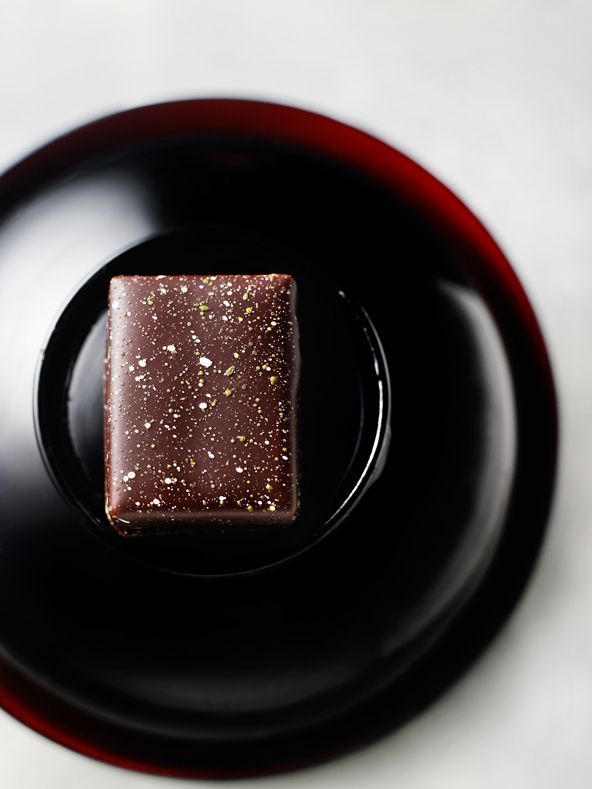
Yuzu
A highly cooling aroma and
a great outpouring of tartness
like the limpid streams of the Shimanto
Recently, yuzu, one of Japan's indigenous citrus fruits, has come to be widely used in Europe. Although it is a common ingredient in Japan, we almost never eat it just as it is like other citrus fruits or make it into juice. The way it is used in Japanese cooking is perfectly expressed by the word okuyukashii (modest). For example, we sometimes discover a piece of yuzu hidden at the bottom of a pot of a large amount of gorgeous food to add flavor. A piece of the peel, thinly carved to look like string, might also be found quietly floating in soup broth to add a pleasing aroma. Yuzu often appears in a supporting role to add a refreshing fragrance and a touch of zest.
The juice that I use in these chocolate bon bons is from yuzu that were grown near the Shimanto River in Shikoku which is said to be Japan's last limpid stream. As the juice is extracted almost entirely by hand right after the fruit is harvested, there is little pulp and we can enjoy the original, pure yuzu taste. In order to bring out the refreshing sour and bitter taste of the juice, I used pure white chocolate as a base for my ganache. I hope you will enjoy the cooling sensation created by the fruit's aroma and the outpouring of tartness in this little morsel.
Yuzu
One of the most cold-resistant citrus fruits, yuzu is also one of the few varieties that grows wild in the Far East. As a seasoning in Japanese cooking, the juice is used to add a touch of fragrance and tartness. The peel is also used in shichimi togarashi (a mixture of seven spices) in cooking or as a condiment. There is a legend that if you put a yuzu in your bath on the winter solstice, the day with the shortest amount of daylight and the longest night, you won't catch a cold for the whole year. Putting the peel in your bath water really does create a nice fragrance, and the custom of taking a yuzu bath continues to be popular as a way of warming up your entire body.


